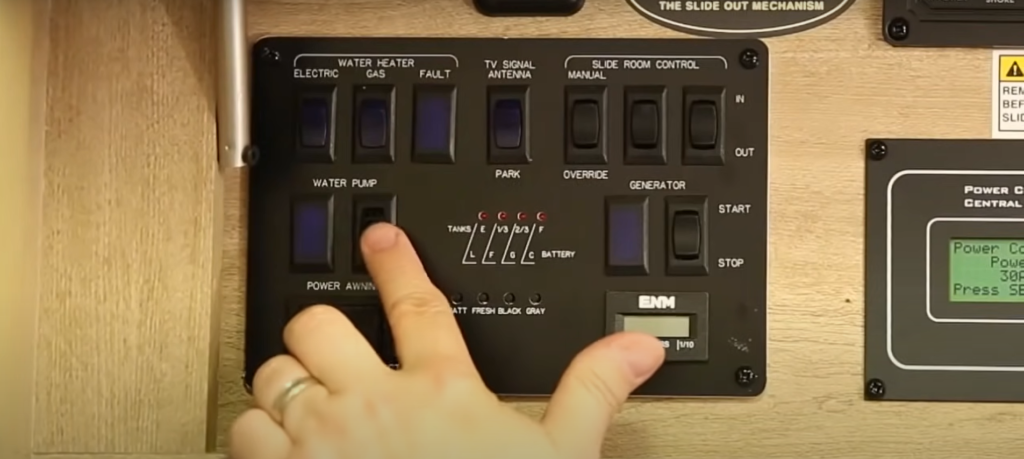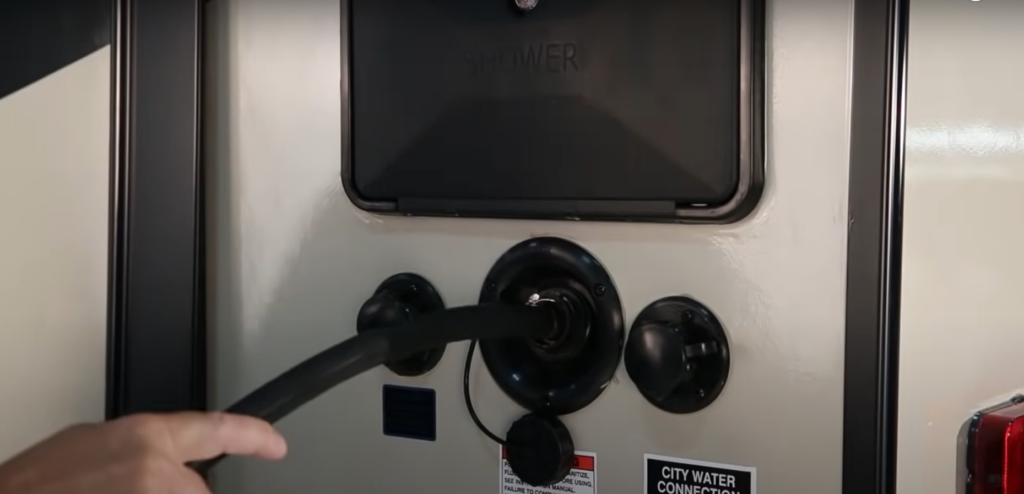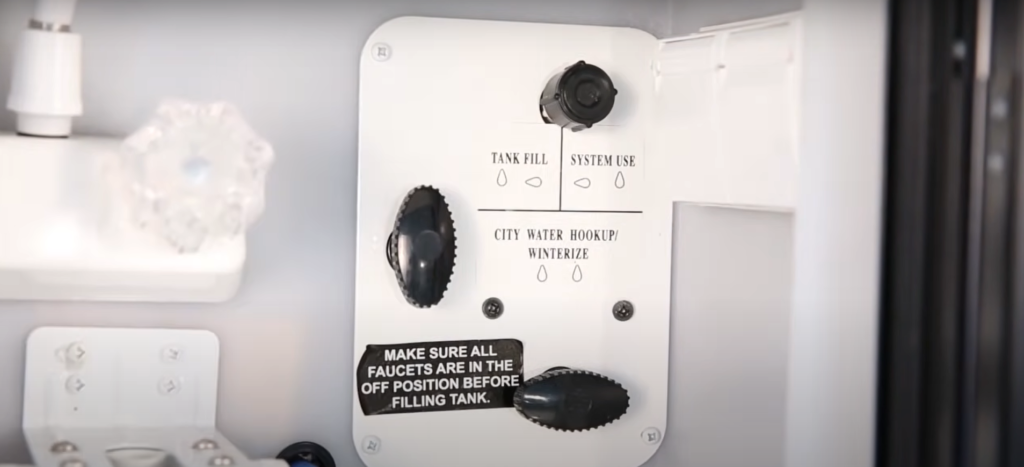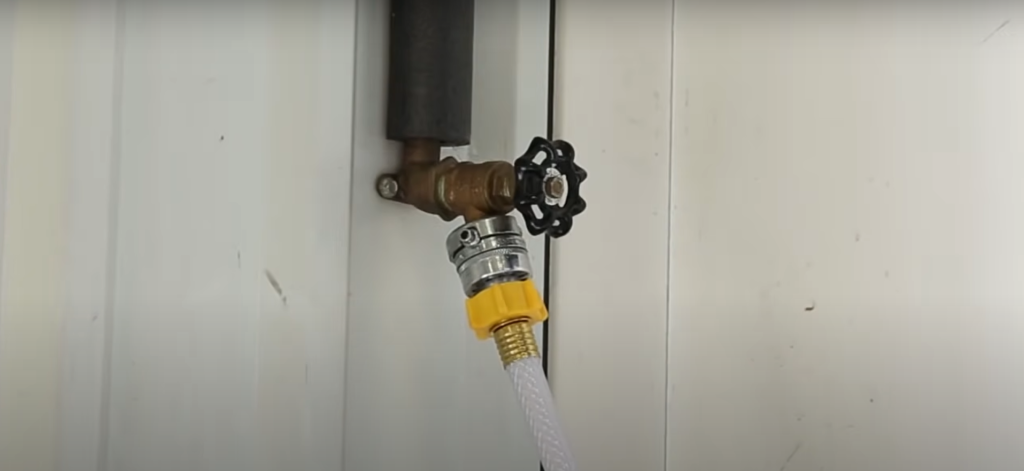Embarking on an RV adventure offers a unique blend of freedom and comfort, but it’s essential to master specific practical skills to ensure a smooth journey. Among these, knowing how to fill your RV’s fresh water tank stands out as crucial. This tank is the lifeblood of your RV’s water supply, catering to needs like cooking, cleaning, and personal hygiene. Therefore, understanding this process is not just a convenience; it’s a necessity for any RV enthusiast.
In this guide, we’ll dive into practical tips and comprehensive guidance on filling your RV’s fresh water tank, ensuring you’re well-prepared for your travels.
Understanding Your RV's Fresh Water System
Your RV’s fresh water system is a cornerstone of your camping experience, designed to provide you with a steady supply of water wherever your journey takes you. Typically, this system includes a freshwater tank, a pump, and a network of pipes that distribute water throughout the RV. Depending on the size and style of your RV, these tanks have capacities ranging from 20 to 100 gallons. Understanding these components and their capacities is essential for effective water management during your trips, helping you plan your refills and usage accordingly.
Stay tuned as we explore more about the intricacies of filling your RV’s fresh water tank and maintaining an uninterrupted water supply on your adventures.
Preparing to Fill Your RV's Fresh Water Tank
Before filling your RV’s fresh water tank, it’s vital to ensure that your water system is clean and safe. Sanitizing the system involves a straightforward process of flushing it with a bleach and water solution, typically recommended every six months or before long trips. Using the proper hose is crucial for this task; ensure you have a hose designated for potable water to avoid contamination.

How To Fill Up Your RV’s Fresh Water Tank - Step-by-Step Guide
Filling your RV’s tank involves connecting your potable water hose to the RV’s water inlet and then to a water source. Make sure the connections are secure to prevent leaks. While filling, keep an eye on the water level to avoid overfilling. It’s also essential to fill slowly to prevent pressure build-up in the system. These steps ensure a safe and efficient process, keeping your RV’s water supply clean and readily available for your journey.

Sources for Fresh Water: Exploring Your Options
When it comes to replenishing your RV’s fresh water tank, you have several options:
Campground Fresh Water Hookups: Many campgrounds offer dedicated fresh water hookups, providing an easy and reliable source for filling your tank.
RV Dump Stations: Often equipped with fresh water facilities, dump stations are a practical choice for refilling your tank, especially when leaving a site.
Highway Travel Centers: These centers are not just for fuel; many also provide fresh water services, making them a convenient option during long drives.
National Forests: Some national forests have water facilities suitable for RVs, though it’s essential to confirm availability and quality beforehand.
Using Bottled Water in Emergencies: In situations where you can’t access the above options, bottled water can be a temporary solution for essential water needs, though not as cost-effective or practical for filling the entire tank.

Alternative Methods to Fill the Tank Without a Hose
- Using a Drill Pump: A drill pump attached to a portable drill can be used to transfer water from a container to your RV’s tank. This method is handy when you don’t have direct access to a hose.
- Tank Vent Method: This involves pouring water directly into the tank vent, a slower but viable method when hose use is not feasible.

Maintaining Water Quality and Safety
To ensure your water remains safe and clean, regular tank cleaning is essential. Additionally, using water filters can significantly improve water quality. It’s crucial to select a filter that suits your specific needs and to understand when and how to change these filters to maintain their effectiveness. Regular monitoring of water clarity and taste can also help in identifying potential issues early.
Conserving Water While on the Road
Efficient water usage is vital when traveling in an RV. Use techniques include shutting off the faucet when washing dishes or brushing your teeth, taking shorter showers, and flushing toilets with grey water that has been reused. Additionally, estimating your daily water needs based on the number of people and usage habits can help in planning and conserving water.

Troubleshooting Common Issues
When filling your RV’s tank, common issues include slow water flow, leaks, or water not entering the tank correctly. Regular checks for hose connections, monitoring the pressure, and ensuring the vent is clear can help address these problems. Regular maintenance is also crucial to avoid these issues.

Embracing the Journey with a Full Water Tank
In this guide, we’ve explored the essential aspects of filling your RV’s fresh water tank. From understanding the RV water system to the various sources and methods for water refill, we’ve covered how to keep your water supply safe and abundant. Remember, regular maintenance and understanding your RV’s specific needs are critical to a smooth journey.
We invite you, our fellow RV enthusiasts, to share your own experiences and tips. Your insights not only enrich our community but also help fellow travelers navigate the joys and challenges of RV life. Happy travels!
Mustakim Hasan
As an engineer with a keen eye for detail, I combines their technical expertise with a fervent passion for the outdoors. At bestcampgears.com, I share in-depth reviews on the latest camping, outdoor, and sports products, offering readers valuable insights and reliable recommendations. Drawing from personal experiences and a love for nature, I also provides practical tips, tricks, and guidance to enhance your outdoor adventures. Whether you're a seasoned camper or a budding outdoor enthusiast, [Your Name]'s blog is your go-to resource for all things camping and outdoors.

Oklahoma Joe’s® Rambler Charcoal Grill Review: A Comprehensive Guide
The Oklahoma Joe’s® Rambler Charcoal Grill is a portable tabletop grill. It’s versatile and promises great grilling experiences. You can use it at home or on a camping trip. Our team

Best Portable Smoker for Camping: Top Picks for Outdoor Cooking
Who doesn’t like some fresh, smoky, hot BBQ during camping? Arranging a BBQ during your camping days will take the enjoyment to another level. The smoky smell will surely increase

50 Most Forgotten Camping Items: Essential Gear You Always Forget to Pack
Camping is the best way to relax and escape the busy and exhausting urban life. You must ensure you have taken all the necessary camping gear during camping. However, in

how long is summer camp ?
how long is summer camp? Though a summer camp is normally 3 to 8 weeks long, to answer this question you need to consider some other factors as well which

The best camping saws 2024: portable, lightweight, and effective
When it comes to camping, having the right tools can make all the difference in your outdoor experience. One essential tool that every camper should have in their arsenal is

The Ultimate Guide to the Best Camping Flashlights for 2024
When camping, one essential item should always be noticed: a reliable flashlight. A good flashlight can make all the difference. You might need a headlamp to navigate dark trails at







